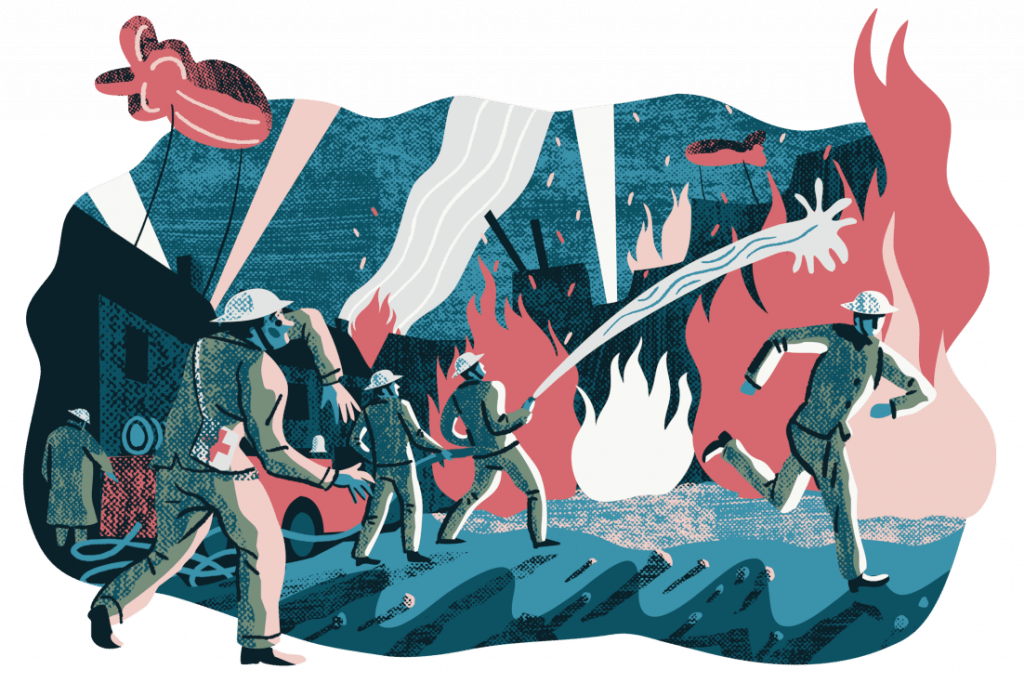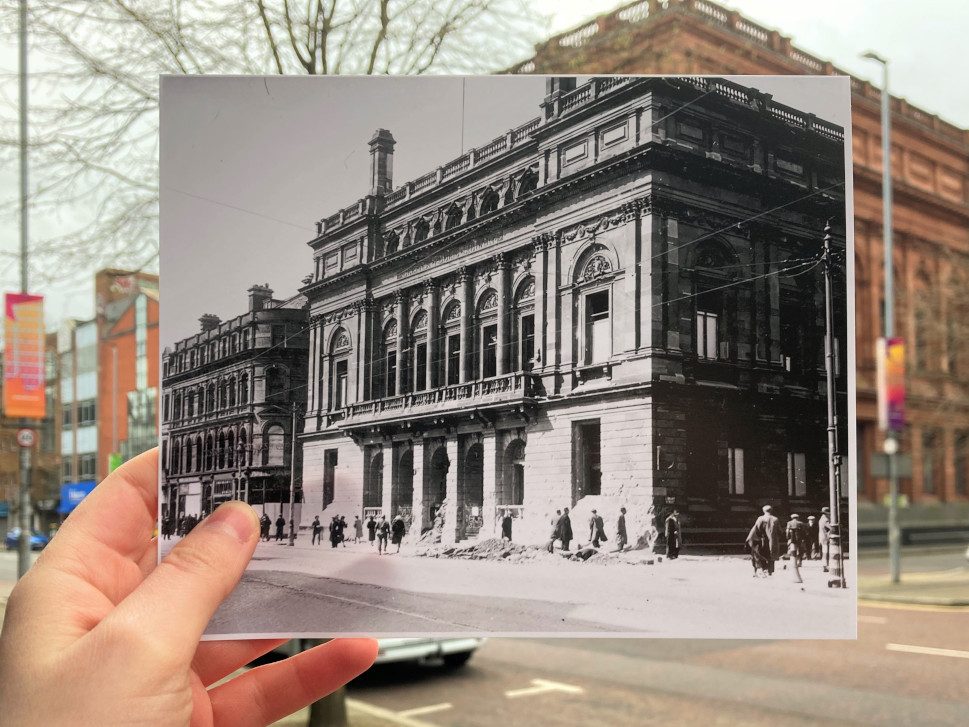The Belfast Blitz

There were four devastating Luftwaffe raids on Belfast in 1941: on 7/8 and 15/16 April, and 4/5 and 5/6 May.
Belfast played an increasingly important role in the war effort, but it was not well defended against an attack from the air. Many evacuees had returned home, and there were only enough air raid shelters to protect a quarter of the city’s population.
Despite the blackout it was easy to locate Belfast and its main industrial targets at the head of Belfast Lough. Close to the shipyards at Harland and Wolff, and aircraft manufacture at Shorts, were the docks, an airfield, a power station, the telephone exchange, the gasworks and three railway stations.
The industrial area around the docks was extensively damaged. But bombs also fell on overcrowded housing in north, east and west Belfast, with devastation spread over 500 streets. Nearly 1,000 people were killed, 2,500 injured and 50,000 left homeless.
The Cathedral Quarter Walking Tour

Developed with our partners at the Northern Ireland War Memorial, this walking tour of the Cathedral Quarter in Belfast explores the impact of the Blitz.
Copies of the tour booklet can be picked up at the Northern Ireland War Memorial on Talbot Street, or at the Ulster Museum. Please note that the link to the audio tour works best on a smartphone.
The Sound That Will Never Leave You
Part One
Part Two
‘The Sound That Will Never Leave You’, written by Glenn Patterson, brings to life the experiences of two children during the Blitz. It takes inspiration from oral testimonies in the archive of the Northern Ireland War Memorial.
Listen through headphones to get the immersive sound experience.
Click below to hear more stories about the Second World War from regions across the UK.
Accessible versions are available below.